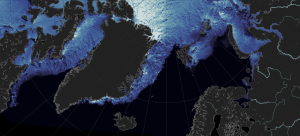Barthélémy, S., Counillon, F., Brajard, J., Bertino, L. 2024: Hybrid covariance super-resolution data assimilation. Ocean Dynamics. https://doi.org/10.1007/s10236-024-01643-6
Summary: The super-resolution data assimilation (SRDA) enhances a low-resolution (LR) model with a Neural Network (NN) that has learned the differences between high and low-resolution models offline and performs data assimilation in high-resolution (HR). The method enhances the accuracy of the EnKF-LR system for a minor computational overhead. However, performance quickly saturates when the ensemble size is increased due to the error introduced by the NN. We therefore combine the SRDA with the mixed-resolution data assimilation method (MRDA) into a method called “Hybrid covariance super-resolution data assimilation” (Hybrid SRDA). The forecast step runs an ensemble at two resolutions (high and low). The assimilation is done in the HR space by performing super-resolution on the LR members with the NN. The assimilation uses the hybrid covariance that combines the emulated and dynamical HR members. The scheme is extensively tested with a quasi-geostrophic model in twin experiments, with the LR grid being twice coarser than the HR. The Hybrid SRDA outperforms the SRDA, the MRDA, and the EnKF-HR at a given computational cost. The benefit is the largest compared to the EnKF-HR for small ensembles. However, even with larger computational resources, using a mix of high and low-resolution members is worth it. Besides, the Hybrid SRDA, the EnKF-HR, and the SRDA, unlike the MRDA, prevent the smoothing of dynamical structures of the background error covariance matrix. The Hybrid SRDA method is also attractive because it is customizable to available resources.
Link to publication. You are most welcome to contact us or the corresponding author(s) directly, if you have questions.

